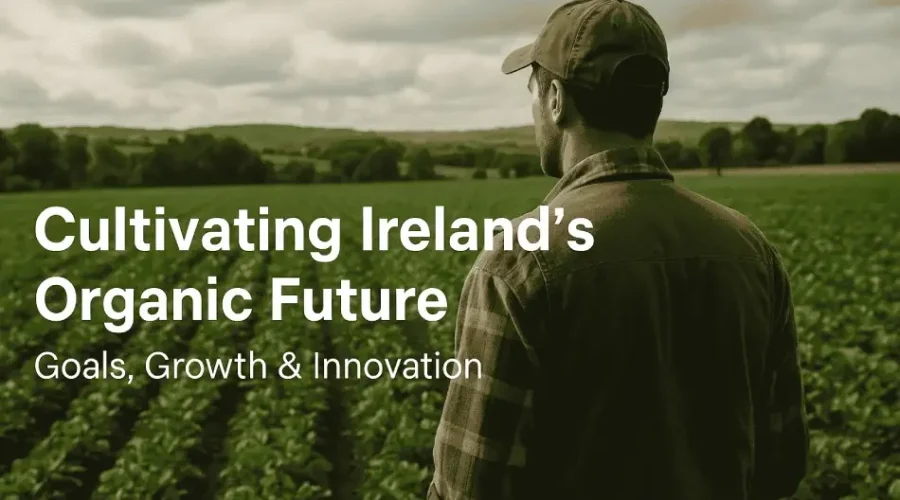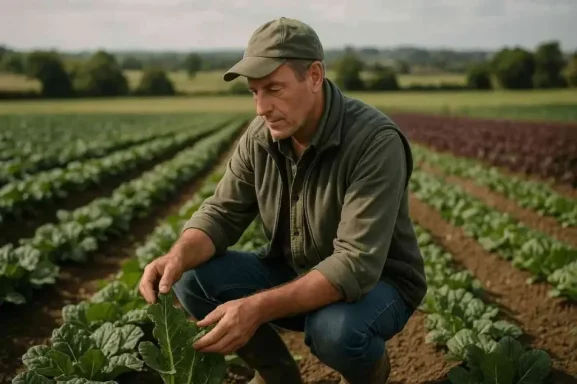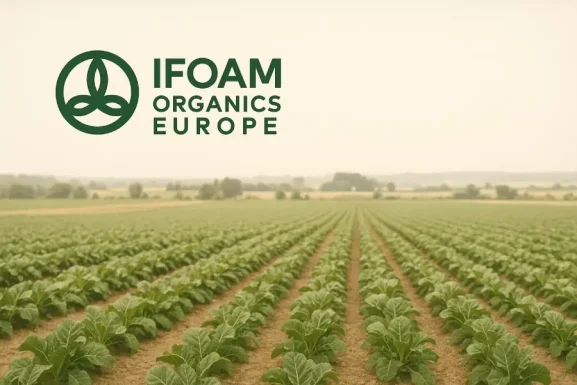Ireland’s Organic Farming Boom: Targets and Trends for 2030
Organic farming in Ireland is scaling up fast. With strong government backing, financial incentives, and growing consumer demand, Ireland is setting ambitious targets for 2030. The plan includes expanding organic farmland, increasing the number of organic farmers, and boosting the value of homegrown organic food.
You’ve seen pieces of this story before on our site: This ties closely with Ireland’s Organic Food Strategy, and builds on how the Irish Organic Association is leading organic farming in Ireland by supporting farmers through certification, market access, and maintaining standards.
As Ireland works toward becoming a leader in sustainable agriculture, the impact will reach every level of the food system — from rural communities to international export markets. The infographic below breaks down key numbers, targets, and growth areas driving Ireland’s organic future.
The Green Shoots of Ireland
Charting the Ambitious Future of Organic Farming
Ambitious 2030 Goal
€750M
The Organic Boom: Farming Growth
The number of farmers converting to organic practices is rapidly increasing, driven by strong government support and the Organic Farming Scheme.
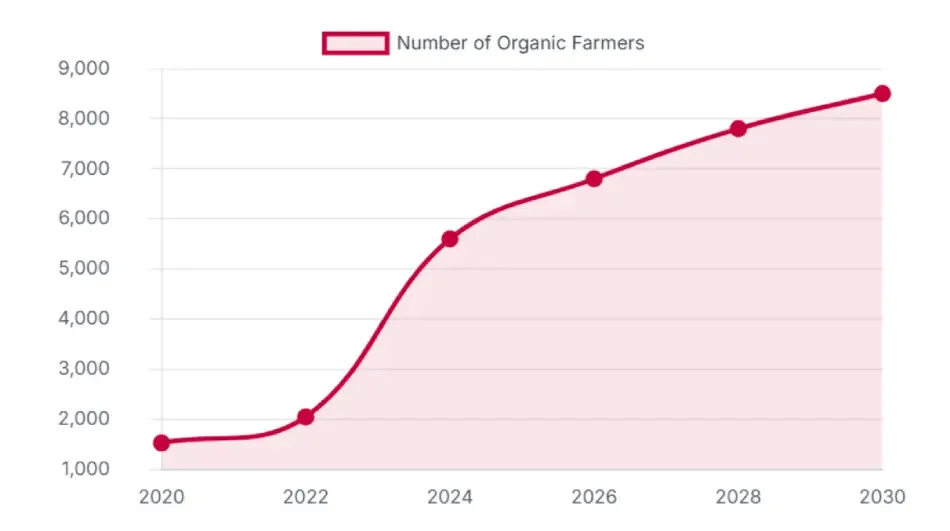
Key Expansion Metrics
10%
Of farmland in Ireland to be organic by 2030
8,500+
Target number of organic famers by 2030
248K
Hectares under organic management
Select Growth Projections by 2030
The National Organic Strategy outlines ambitious growth targets across key agricultural sectors to boost domestic production and value.
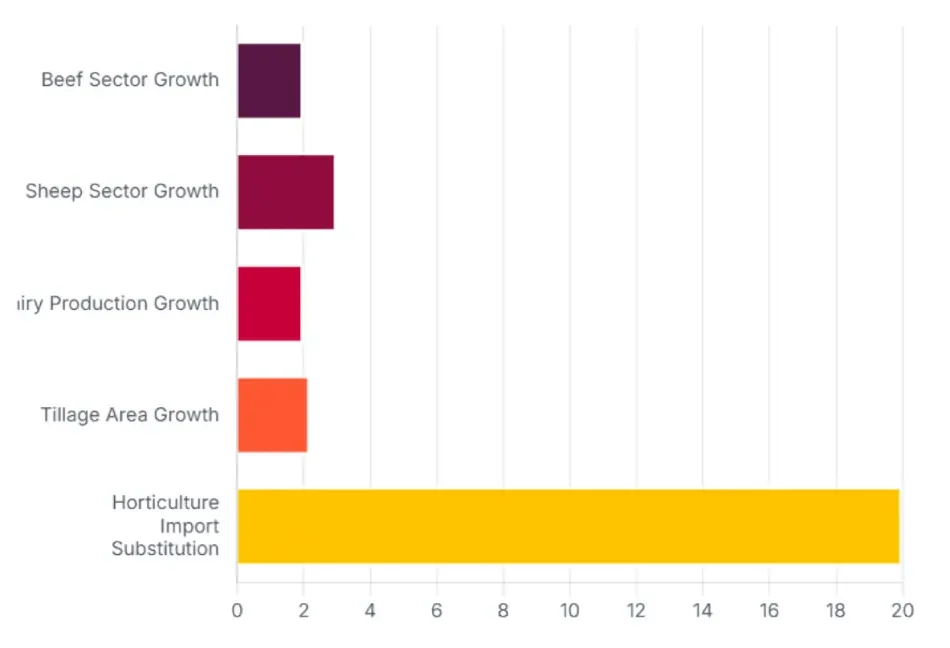
An Integrated Support System
A coordinated effort between government policy, financial schemes, and market developments fuels the growth of organic farming in Ireland.
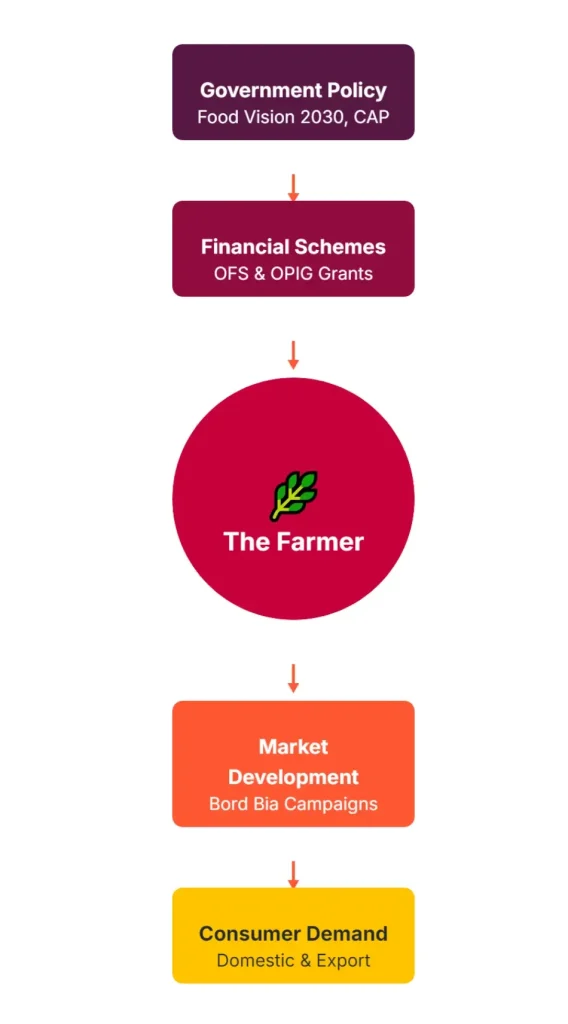
The Next Harvest: Precision Agritech
The next major leap for Irish organics will be the integration of digital technologies, combining traditional values with modern innovation for a more efficient, resilient, and profitable future.
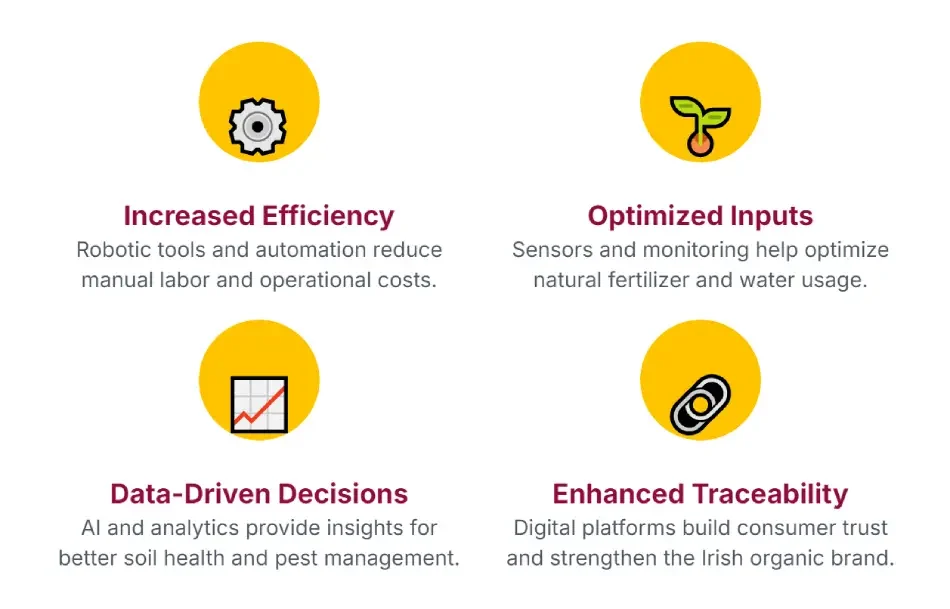
The Impact on Irish Farmers and Communities
For farmers, the shift to organic means better access to financial support, growing domestic demand, and new export opportunities. This echoes what we’ve discussed in Organic Production in the EU: Path to 2030 where EU‐wide goals and supports also affect Irish farmers. Consumers will see more Irish organic products on shelves, offering fresh, chemical-free, locally produced food that supports rural livelihoods.
Innovation Driving Growth
To reach €750M in organic output, Ireland must balance tradition with technology. Precision agritech robotics, data analytics, optimized natural inputs will play a major role in helping farmers produce efficiently without compromising organic integrity. These tools improve soil health, reduce costs, and strengthen trust in the Irish organic label. You can see similar themes in how Europe’s advocate for organic regulation works to support innovation and consistent standards. See, Europe’s Advocate for Organic Farming & Regulation.
Why It Matters
Ireland’s organic strategy goes beyond farming. Expanding organic farmland to 10% by 2030 supports climate goals, biodiversity, and long-term food security. Every hectare under organic management is a step toward healthier, more resilient agricultural systems. For further reading on what “organic” means in practice for animals, land, and standards check out How Animals Are Raised Organically in Ireland and Rediscovering What Local and Organic Really Means.
